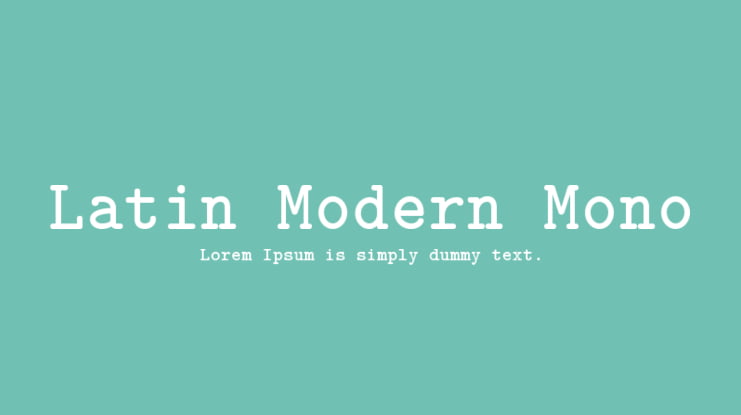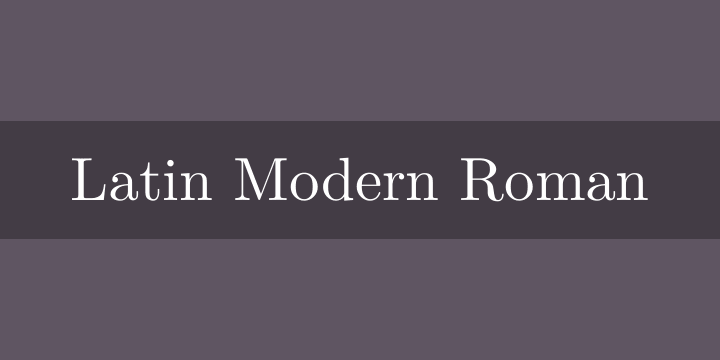

Several such derivatives are now also widely used and included in TeX Live, a modern TeX distribution.Ī current extended release of the Computer Modern family in the general-purpose OpenType format is the CMU distribution (for Computer Modern Unicode):
#Latin modern roman font software#
He mostly left the font, as with other components of TeX, in the public domain, but made one request: that any derivative work based on Knuth's software not carry the same name, a request Knuth made to assure quality control. Knuth produced his original Computer Modern fonts using Metafont, a program that reads stroke-based definitions of glyphs and outputs ready-to-use fonts as bitmap image files. Derived versions Ī sample gallery of many of the fonts from the CMU (Computer Modern Unicode) font family.

#Latin modern roman font how to#
While it attracted attention for the concept, Metafont has been used by few other font designers by 1996 Knuth commented "asking an artist to become enough of a mathematician to understand how to write a font with 60 parameters is too much" while digital-period font designer Jonathan Hoefler commented in 2015 that "Knuth's idea that letters start with skeletal forms is flawed". This allows Metafont designs to be processed in unusual ways Knuth has shown effects such as morphing in demonstrations, where one font slowly transitions into another over the course of a text.

The Computer Modern source files are governed by 62 distinct parameters, controlling the widths and heights of various elements, the presence of serifs or old-style numerals, whether dots such as the dot on the "i" are square or rounded, and the degree of " superness" in the bowls of lowercase letters such as "g" and "o". The most unusual characteristic of Computer Modern, however, is the fact that it is a complete type family designed with Knuth's Metafont system, one of the few typefaces developed in this way. Modern faces were used extensively for printing mathematics, especially before Times New Roman became popular for mathematics printing from the 1950s. In creating the TeX publishing system, Knuth was influenced by the history of mathematics and a desire to achieve the "classic style" of books printed in metal type. This was one of many modern faces issued by typefounders and Monotype around this period, and the standard style for body text printing in the late nineteenth century. Computer Modern was specifically based on the 10 point size of the American Lanston Monotype Company's Modern Extended 8A, part of a family Monotype originally released in 1896. Didone fonts have high contrast between thick and thin elements, and their axis of "stress" or thickening is perfectly vertical. Its direct inspiration, Monotype Modern, is at top similar typefaces of the era included Century, Excelsior and Clarendon.Ĭomputer Modern is a 'Didone', or modern serif font, a genre that emerged in the late 18th century as a contrast to the more organic designs that preceded them. Computer Modern is based on late-1800s Didone type.


 0 kommentar(er)
0 kommentar(er)
